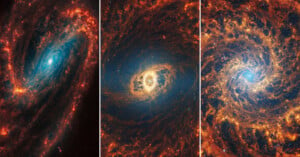
Webb Captures ‘Extraordinary’ Photos of 19 Nearby Spiral Galaxies
The James Webb Space Telescope captured images of 19 nearby spiral galaxies as part of its long-term Physics at High Angular resolution in Nearby GalaxieS (PHANGS) program.

The James Webb Space Telescope captured images of 19 nearby spiral galaxies as part of its long-term Physics at High Angular resolution in Nearby GalaxieS (PHANGS) program.
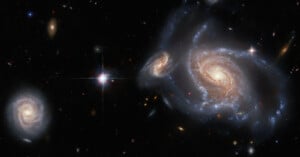
Hubble continues to generate some some outstanding visuals of space and its latest is no exception. However, as much as this photo looks like it portrays a densely packed region of galaxies, reality is not quite so straightforward.
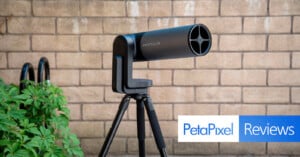
Most "serious" astrophotographers will balk at the idea of a smart telescope. While it may miss some of the professional level tools, resolution, and precision, the $2,499 eQuinox 2 from Unistellar does provide easy access to the cosmos for up to 10 viewers at a time, making it a great (albeit expensive) tool for beginners and casual stargazers to enjoy viewing interstellar objects in minutes.
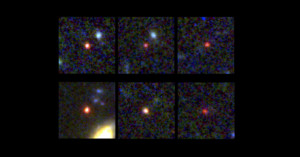
The James Webb Space Telescope (JWST) has been used to identify six galaxies that potentially emerged extremely early in the universe’s history and are so massive they should not be possible under the current cosmological theory.
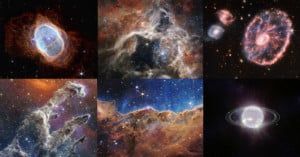
The James Webb Space Telescope (JWST) blasted off into space on December 25, 2021. Since then readers have been treated to a series of stunning images of the cosmos.
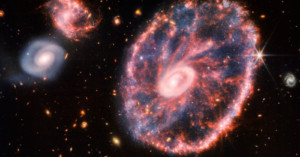
The European Space Agency (ESA) has published a video that puts into perspective just how far away the latest target of the James Webb Space Telescope (JWST), the Cartwheel Galaxy, is.

The James Webb Space Telescope has delivered a follow-up to its first images that were revealed last month. The photo is of the Cartwheel Galaxy and is a composite image created from its Near-Infrared Camera (NIRCam) and Mid-Infrared Instrument (MIRI).
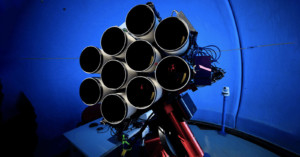
Canon has partnered with an Australian university to bundle 10 Canon EF 400mm f/2.8 L IS II lenses together into what they call the Huntsman Telescope to scout the skies from the Southern Hemisphere.
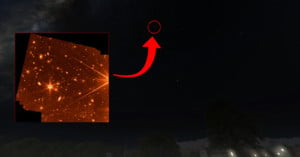
Last week, NASA shared a photo captured by the James Webb Space Telescope's guidance camera that, while imperfect, is the deepest image ever captured of the universe so far.
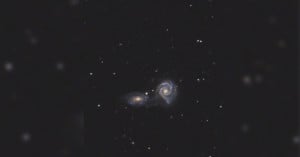
Astrophotographer Brandon O'Meal managed to photograph a pair of colliding galaxies that exist about 130 million light-years away from his backyard.
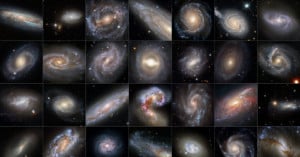
NASA's Hubble Space Telescope has calibrated more than 40 "milepost markers" of space and time over the course of the last 30 years that scientists are using to measure the expansion of the universe.
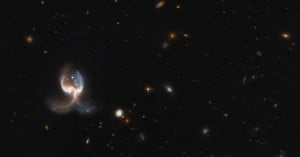
The universe is losing a galaxy. Recent images from the NASA/ESA Hubble Space Telescope show two galaxies in the process of merging. Dubbed "Angel Wing" due to its symmetrical appearance, the collision forms part of the Leo constellation.
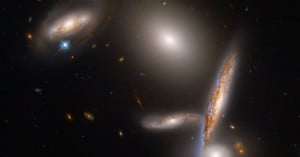
NASA is celebrating the Hubble Space Telescope's 32nd birthday through a remarkable photo that shows a collection of five closely-knit galaxies called The Hickson Compact Group 40.
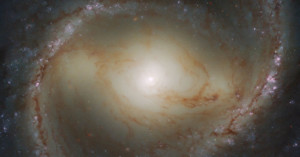
The Hubble Space Telescope has been responsible for some of the most exciting astronomical finds in history and while research time with Hubble is highly sought after, anyone can check what the storied telescope is currently pointed at whenever they like.
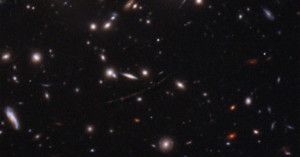
The Hubble Space Telescope has set a new record: photographing a star that existed when the universe was just 7% of its current age. The star is the farthest away any has ever been photographed, and its light took 12.9 billion years to reach Hubble.
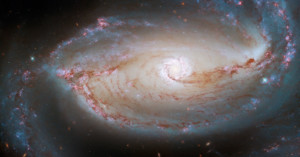
The Hubble Space Telescope has captured an incredibly detailed photo of a spiral galaxy that is shaped like an eye. The photo was made thanks to two of Hubble's instruments: the Wide Field Camera 3 (WFC3) and the Advanced Camera for Surveys (ACS).
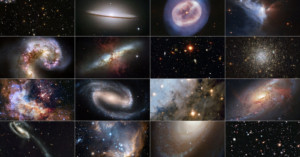
The Hubble Space Telescope recently celebrated its 20th year using the Advanced Camera for Surveys (ACS), which was installed on Hubble in March of 2002 and became its most used camera.
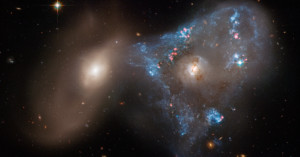
Hubble has captured a stunning photo of two interacting galaxies that likely passed through one another, which caused them to ignite in a "frenzy of starbirth."
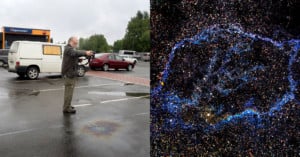
Finnish photographer Juha Tanhua has been shooting an unusual series of "space photos." While the work may look like astrophotography images of stars, galaxies, and nebulae, they were actually captured with a camera pointed down, not up. Tanhua created the images by capturing gasoline puddles found on the asphalt of parking lots.
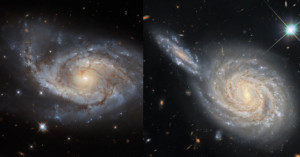
The Hubble Space Telescope, while soon to be succeeded by the James Webb Space Telescope, continues to capture important images of the universe. In two recent images, perspective plays an important role in how these galaxies appear.
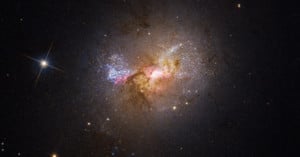
The Hubble Space Telescope has observed a black hole at the center of a dwarf galaxy that is not acting like the destructive monsters they are often portrayed as. Instead, this black hole is creating stars rather than absorbing them.

In December of last year, Hubble captured a photo of a distant galaxy that, thanks to gravitational lensing, appeared almost as a perfect "Einstein Ring." A year later, astronomers revealed what they learned from examining the photo.
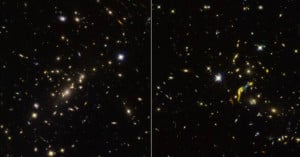
The Hubble Space Telescope in concert with the Atacama Large millimeter/submillimeter Array (ALMA) in Chile found what NASA describes as odd: early, massive, "dead" galaxies that have run out of the fuel necessary to continue to make stars.
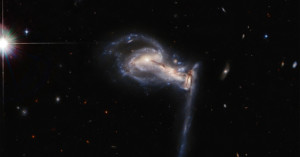
NASA has published a spectacular image that was photographed by the Hubble Space Telescope that shows what the space organization describes as a three-way tug-of-war between interacting galaxies.
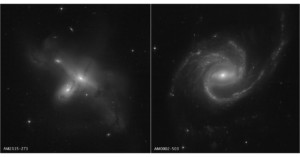
NASA has released two new stunning images taken by Hubble after the legendary telescope was forced offline for a month.
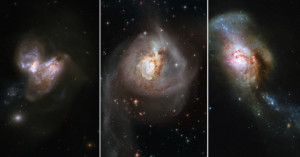
As part of its celebration of a new year, the NASA/ESA Hubble Space Telescope has published six different galaxy mergers. These rare astronomical phenomena were captured as part of a recent survey to investigate the rate of new star formations.
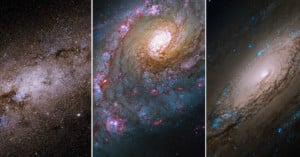
In celebration of its 30th anniversary capturing stunning images of stellar objects, NASA has released 30 newly-processed Hubble images featuring galaxies, star clusters, and nebulae.
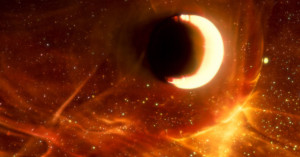
Paris-based artist Roman Hill explores the microscopic world as a way to capture the immensity of the universe. His latest short film, titled As Above, looks like a mesmerizing display of cosmic gasses, stars, and galaxies, but it was shot on a tabletop.
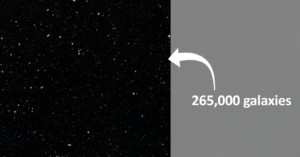
NASA astronomers have created an ultimate stitched panorama of galaxies in the night sky using 7,500 individual photos shot through 16 years' worth of exposures using the Hubble Space Telescope. It's called the Hubble Legacy Field.
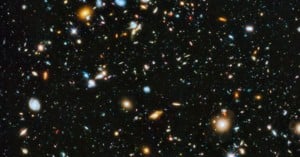
In their seemingly never-ending effort to amaze us mere mortals, NASA has released yet another jaw-dropping Ultra Deep Field image. The above image is a composite created from only the best of the images captured between 2003–2012 by the cameras aboard the Hubble Space Telescope.
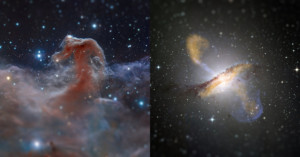
Photographs of galaxies far far away rarely convey just how large what you're looking at really is -- after all, how can you even fathom something that is measured in light years across. But these photos of the cosmos do an even worse job. By applying the tilt-shift effect in post, these photos show galaxies and nebulae look like they could fit comfortably in the palm of your hand.
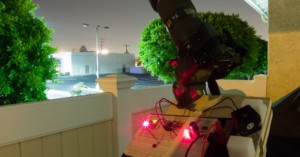
Getting quality astrophotography shots comes with several challenges, and one of the main ones is that the starts don't stand still -- or, more accurately, we don't. Since the Earth enjoys spinning on its axis once every 24-hours or so, exposures in excess of about 1 second begin producing star trails unless you have the camera or telescope on some sort of tracking mount.
Fortunately, if you don't have the money to purchase a $1,000+ equatorial mount but still want to take long-exposure astrophotography, the DIY barn door tracking mount above will enable you to do so on the (relatively) cheap.
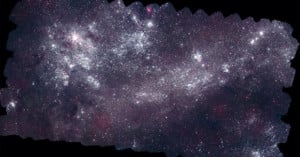
High-resolution photography is seemingly where it's at in today's day and age. NASA knows this, and as such, astrophysicists at both the Goddard Space Flight Center (GSFC) in Maryland and Pennsylvania State University have stitched together a remarkable 160-megapixel UV image of the Large and Small Magellanic Clouds -- our two closest neighboring galaxies (less than 200,000 light years away).
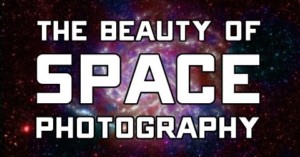
Astrophotography, especially the type taken by $10 billion telescopes floating around in outer space, is both fascinating and beautiful. The photos offer so much, both from an artistic and scientific standpoint. Awe-inspiring glimpses into the great void are now widely available, making these unbelievably distant galaxies seem almost touchable.
In the video above, PBS got together Astrophysicist Dr. Emily Rice, Hubble Image Processor Zolt Levay and Astronomer David W. Hogg to discuss the beauty and importance of space photography -- explaining a little bit of the why and how behind our photographic search of the universe.
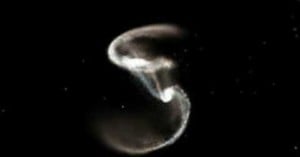
Space collisions are massive, unbelievably powerful events. When two galaxies collide -- that is, when their gravitational fields start interacting with one another -- the resulting billion-year-long process contorts and twists the galaxies into the fascinating shapes we've seen in photographs taken by powerful space telescopes.
The above video is a supercomputer simulation of two galaxies going through a many-hundred-million-year-long collision. As the galaxies merge into the known stages of collision that have been photographed by Hubble, the video is paused and replaced with a photograph of that stage taken IRL.
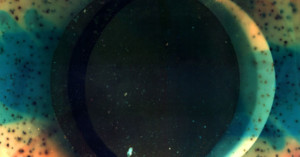
What kind of imagery results when you mix photo paper and fireworks? That's a question photographic artist Ross Sonnenberg has been exploring for the past few years. He creates one-of-a-kind camera-less photograms that look like abstract images of galaxies, but are actually random and colorful patterns created by the light of firecrackers.
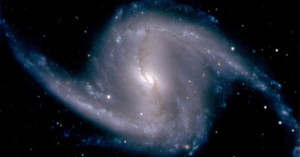
On a mountaintop in Chile is the most powerful digital camera mankind has ever constructed. Called the Dark Energy Camera, the phone booth-sized device shoots 570-megapixel photographs using an array of 62 separate CCD sensors and a 13-foot light-gathering mirror. Planning and building the thing took 120 scientists from 23 international organizations a whopping 8 years.
This past week, the researchers behind the project announced the first fruits of their labor: massive photographs that show patches of the sky 20 times the size of the moon (as seen from Earth).
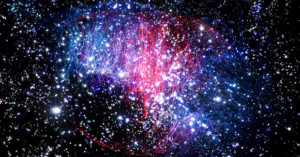
At first glance, the images in Fabian Oefner's Nebulae might look like images of distant galaxies captured with a space telescope. They were actually shot in a studio using a number of fiber glass lamps. Oefner used exposures of different lengths to capture the ends of the lit fiber glass as points and streaks of light. He then combined multiple images into single photos to achieve the "star density" seen in the final images.
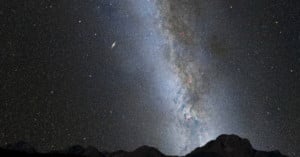
NASA astronomers announced today that they are certain that our galaxy is on an unavoidable collision course with the Andromeda Galaxy, the closest spiral galaxy to us. Don't worry though, it won't be happening for another 3.5 billion years or so. What's interesting is that the collision will drastically change what our night sky looks like, and the astronomers released a series of photo illustrations showing what future astrophotographers will be shooting when they point their cameras at the heavens.
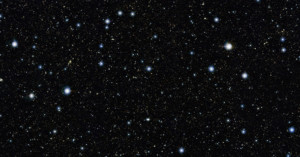
This photo is what you get when you point a massive 4.1 meter telescope (VISTA in Chile) at an unremarkable patch of night sky and capture six thousand separate exposures that provide an effective "shutter speed" of 55 hours. It's an image that contains more than 200,000 individual galaxies, each containing countless stars and planets (to put the image into perspective, the famous Hubble Ultra-Deep Field contains "only" around 10,000 galaxies). And get this: this view only shows a tiny 0.004% of the entire sky!